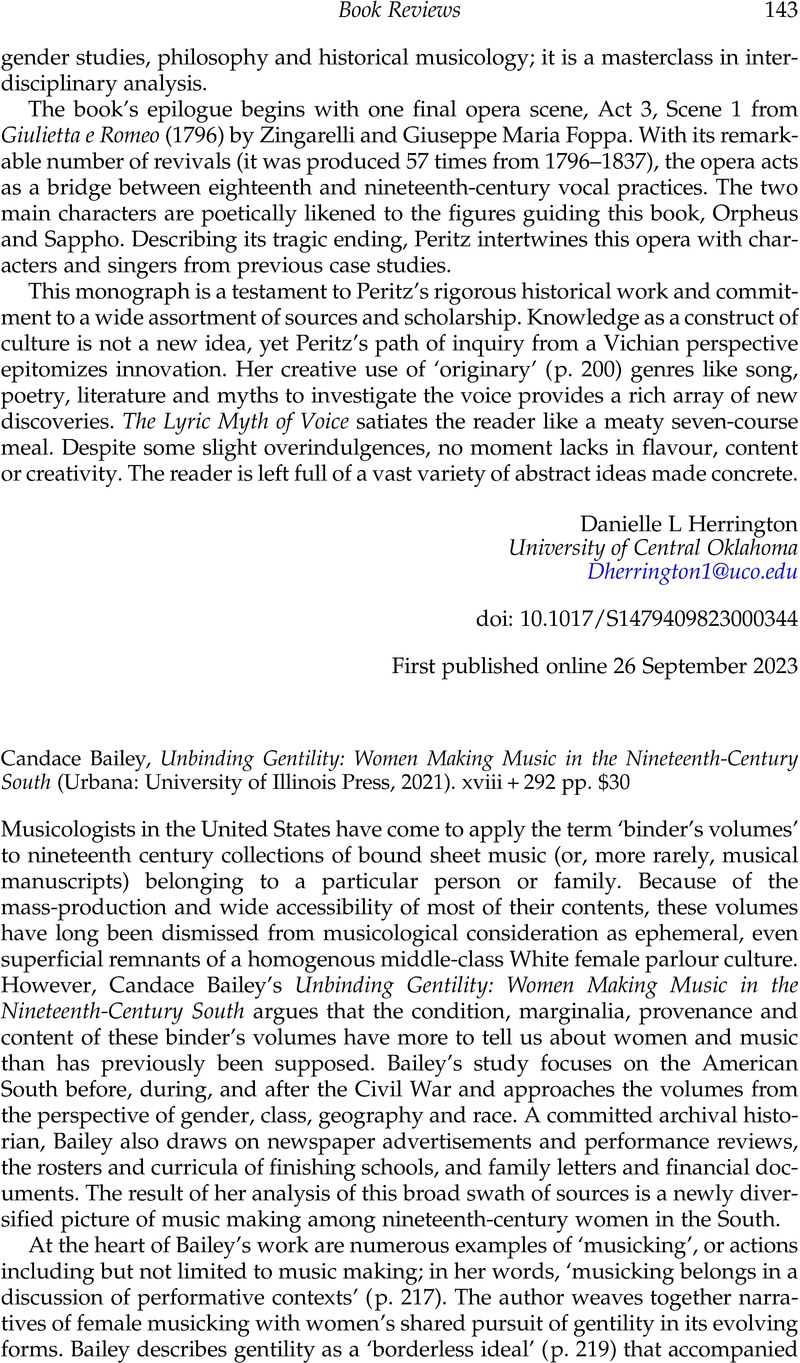No CrossRef data available.
Published online by Cambridge University Press: 28 September 2023

1 Halttunen, Karen, Confidence Men and Painted Women: A Study of Middle-Class Culture in America, 1830–1870 (New Haven: Yale University Press, 1982)Google Scholar.
2 Candace Bailey, Binder's Volumes: Musicking in the 19th Century, accessed July 20, 2023, http://clbaileymusicologist.com/BV/.
3 Although the author does not directly address her title, she reiterates gentility's potential as a tool for liberating women's musical practices from the binaries that falsely omit the middle class and a diversity of repertoires from the established narratives of this chapter of music history.
4 Bushman, Richard Lyman, Refinement of America: Persons, Houses, Cities (New York: Vintage, 1993)Google Scholar.
5 A portion of this chapter also appeared in Bailey's contribution to the 2021 JAMS colloquy on ‘Early American Music and the Construction of Race’. Bailey, , ‘Music and Black Gentility in the Antebellum and Civil War South’, Journal of the American Musicological Society 74, no. 3 (2021): 600–10Google Scholar.
6 Candace Bailey, ‘Biographical Information’, University of Illinois Press, accessed July 25, 2023. https://files.press.uillinois.edu/books/supplemental/p085741/Biographical_Information.pdf. For her compiled list of binder's volumes and related collections, see Candace Bailey, ‘List of Binder's Volumes and Prominent Collections’, University of Illinois Press, accessed July 25, 2023, https://files.press.uillinois.edu/books/supplemental/p085741/List_of_Binder's_Volumes_and_Prominent_Collections.pdf. At the time of this writing Bailey's link titled ‘Supplemental Materials’ on the ‘Supplemental Links’ page on the University of Illinois Press site does not work, but you can navigate to the ‘Supplemental Materials’ page easily through the nearby menu item of the same name.